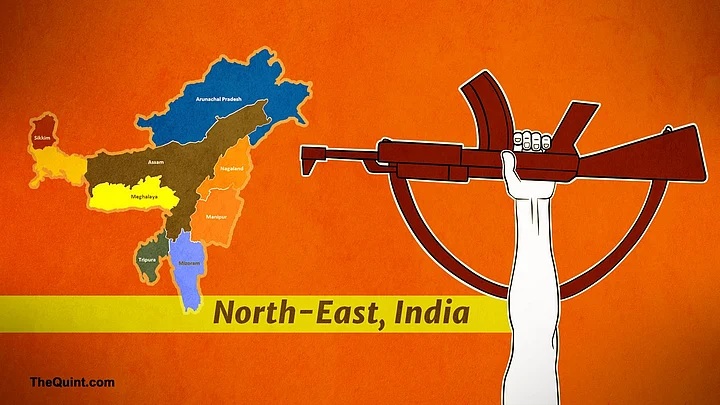Chronic attacks of the insurgency virus over decades has made the people of Northeast apparently immune to the scourge. The relentless operations by security agencies have forced some of the militant groups to surrender or run away to alien lands – which they use as shelter – and to employ hit-and-run tactics in the region.
In between, there are instances of militant groups surrendering in big numbers. One faction would be negotiating, while some others would have gone into the jungles, declaring their disagreement with the negotiating group.
These have been recurring so often that ordinary citizens have become oblivious. There is a growing realisation among the insurgent elements that their strength and firepower have been decimated and there is erosion of their support base – whatever minimal level they had.
The recent strategic shift in the operational tactics of some of the groups by forming coalitions may be seen in this light.
The attempt to create a joint front of diverse groups with similar ideologies, but catering to the self-proclaimed needs of different communities, has resulted in a regrouping by the name of CorCom (Coordination Committee). Comprising six Meitei groups of Manipur and UNLFW – the United National Liberation Front of Western Southeast Asia – CorCom came into existence in April 2015.
It is worthwhile to recall here that the joint statement for a Republic Day boycott call this year had the signatures of the United Liberation Front of Assam-Independent (ULFA-I), CorCom, and two militant outfits of Meghalaya.
Another coalition was seen when the newly-formed Karbi group, called PDCK (People's Democratic Council of Karbi Longri), issued a similar boycott call notice at the same time along with KLO (Kamtapur Liberation Organisation), NDFB (National Democratic Front of Bodoland) and the NLFT (National Liberation Front of Tripura).
The formation of bodies like CorCom or UNLFW has the core strategic objective of launching attacks against security forces through combined tactical operations since individual militant groups lack adequate firepower.
This led to the recent joint ambushes on patrols and road opening parties at Pengery and Jagun within Assam, and similar incidents in Manipur, causing casualties among security personnel. Immediately, there were claims by the groups in the name of their common platform.
But the most crucial issue in the formation of such coalitions is whether such a misconceived notion of ‘unity in struggle’ would percolate down to the ordinary members of the communities they claim to represent. In reality, the militant groups, with their self-proclamation of representing diverse ethnic communities, are constrained by the historical and geopolitical dynamics of the region.
The cake is too small, the space is meager and their territorial aspirations cut into the domain of others.
Conflicts amongst different factions have been there since the inception of insurgency in the region. There are instances of such feuds resulting in deadly armed violence leading to deaths and destruction among the cadres.
The proposed creation of seven new districts in Manipur in early December last year had brought such divergences amongst insurgent groups to head. One could see how militant groups in the valley had resisted the area domination by the Nationalist Socialist Council of Nagaland-IM (NSCN-IM) cadres.
There was fear and apprehension amongst the NSCN-IM that creating new districts would result in encroachment of land that the Nagas claim to belong to their ancestors.
The indefinite economic blockade by the United Naga Council (UNC) was a point to be noted in the power struggle among the groups.
The conflict was felt at the ground level too. The Kukis expressed their contentment as reorganisation of the districts had the blueprint of a district carving out the Kuki-dominated region of Sadar hills.
Also, some Meitei groups were not allowing vehicles bearing Nagaland registration plates to ply in the areas dominated by them.
Such conflicts are being seen as the result of forces embedded in the history of the northeast region.
Incidents of ethnic clashes between different communities in Assam point to the state of conflict and dissension on issues of geographical, cultural, and emotional space among these communities/tribes.
Therefore, even though tactical alliances have been made by different militant groups at the top level, one may rightfully be apprehensive of any long-term support by the conflicting community members at the grassroots.
It is less likely that such a coalition at the tactical level of these insurgent groups could be endorsed by the ordinary members belonging to the communities at the societal level.
This is another short-term, make-believe piece of strategy that is unlikely to pose a threat to the security forces in their offensives against the militants in the region.
(The writer, Kulu Saikia, is a Special DGP, Assam, in charge of law and order. The article has been published in special arrangement with IANS. The views expressed above are the author’s own. The Quint neither endorses nor is responsible for the same.)
